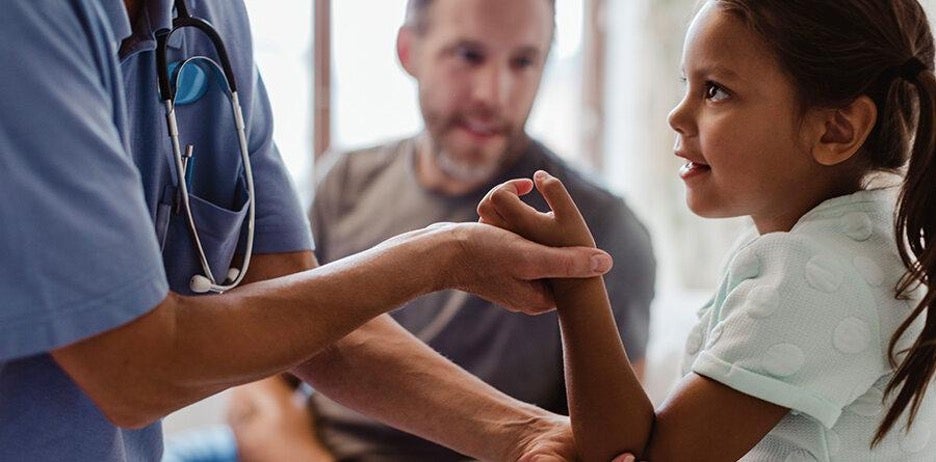3 Benefits of Patient Education: Improving Safety and Quality of Care

Categories: health systems, healthcare organizations
Healthwise is now a part of WebMD Ignite. Our suite of solutions, included within Ignite Education, easily integrate within existing workflows to deliver relevant health education wherever consumers are, on any device—from the clinical setting to health plans to digital health applications.
It’s a family’s nightmare: a car accident. It happened to one pediatrician and his child. The pediatrician was okay, but his young daughter complained that her head hurt, so they went to the ER. While the ER doctor looked over the little girl, she recognized the pediatrician and began using high-level medical terminology to explain her assessment. The pediatrician held up his hand and said, “Stop. Please explain this in simple terms. I’m a father today, not a pediatrician.”
If a doctor experiencing a medical crisis wants simple medical explanations, imagine how important it is for patients who are often faced with highly technical or woefully bare-bones health information. How can anyone take care of themselves—or their loved ones—if they don’t even understand what’s going on?
Not only does effective health education help patients understand and stay safe when they need it most, but it helps improve outcomes and reduce readmissions. Here’s how.
1. Patient education helps patients in crisis clarify, remember, and be safe
Dealing with a health scare or diagnosis is almost always disorienting and difficult. And when people are stressed out, their ability to think clearly and remember new information is diminished. Patient education needs to be understandable and actionable so patients can do what they need to keep themselves safe and healthy.
- Share health education that not only explains the fundamentals about a condition but also provides actionable next steps. For example, after a surgery that involves an incision, teach patients about their incisions, as well as practical steps to safely manage their wound at home and prevent infection.
- Consider health literacy by making sure the materials follow CDC plain-language guidelines. And avoid pages and pages of printed materials or long boring videos. Seek out low-text multimedia content. Think of what works on TV and social media: short video clips, engaging messages, less text, more visuals.
- Use health education that incorporates diversity and gender inclusiveness. Make sure images and illustrations include different body types and ethnicities and offer information in different languages. When patients see themselves in the education, they connect with it better.
- Look for content that is accredited by URAC or NCQA to signal that it's quality health education. These accreditations are becoming more and more commonly desired and are now even required in some states like California.
2. Patient education makes patients partners in their own care
A clinician isn’t always available for patients at home, so patients need to know how to stay healthy. When they understand their condition and what to do, they’re empowered to partner with care providers for better health. Getting patients involved is so effective that in 2007, the Joint Commission mandated that healthcare organizations “encourage patients’ active involvement in their own care as a patient safety strategy” as a National Patient Safety Goal.
Make it easy for clinicians to provide health education at the point of care by using a health education solution that fits into their workflow and saves them unnecessary clicking and task switching. An easy-to-use system ensures clinicians can share consistent health education that covers every touchpoint of a patient’s care journey. It’s even better if the patient can access that information easily, whether they’re in the hospital, at home, on a computer, on a smartphone, or within a patient portal. Some health education even provides QR codes on printed education materials so patients can easily access the information and additional multimedia resources digitally.
And don’t underestimate the power of caregivers. Including caregivers is a key quality measure that is often overlooked as reflected in the CARE Act, the national initiative spearheaded by AARP to include caregivers during discharge education. Caregivers will be able to remember the education and reinforce it once the patient is home. It’s critical to include caregivers when teaching new skills such as wound care and dressing changes as well as helping with practical things like getting the patient safely out of bed and ambulating during home recovery.
Imagine a patient undergoing a knee replacement. Many knee replacement patients think they’ll be better in two or three weeks, but recovery is typically a three- to four-month journey. Patients need that context to not only manage their expectations but manage the recovery journey itself. If the patient receives clear, easy-to-understand information about how to prepare for the surgery, plus realistic expectations for their recovery timeline, they’ll be well prepared for their procedure. During the procedure, they’ll be less anxious or fearful because they understand what’s happening. And after the surgery, patients who receive consistent, actionable information about recovery will be more engaged in managing their own care, have the self-confidence to do it, and less likely to be readmitted.
3. Patient education improves outcomes and reduces readmissions
Finally, many healthcare organizations have specific goals around improving outcomes and reducing readmissions. Ensuring your patients have education that prepares them to take care of themselves helps the patients AND your bottom line. Studies have shown that patients who are provided with quality education are more likely to have successful recoveries and adhere to care regimens.
One example of how knowledge spells cost savings is related to wound management. According to the CDC, 1 in 31 patients in hospital facilities has a hospital-acquired infection (HAI). HAIs in U.S. hospitals have direct medical costs of at least $28.4 billion each year. HAIs also account for an additional $12.4 billion in costs to society from early deaths and lost productivity. Two of the main risk factors for contracting an HAI are not adhering to best practices for prevention and overuse or improper use of antibiotics. Two of the ten strategies to combat HAIs? You guessed it: promoting appropriate antibiotic use and educating patients.
Not only do patients who receive health education have better outcomes, but they’re more satisfied with the organizations that provide it. Patient education can improve patient satisfaction scores related to better communication with doctors and nurses and having a better understanding of discharge information and how to take medicines. Inconsistent or unintelligible information can leave patients and their loved ones feeling like they’re not getting the best possible care. Preparing and educating patients along their journey means they have more confidence in care and feel more comfortable with their experience.
Think back to the pediatrician’s story—he just wanted understandable medical information about his loved one. Most patients are the same: they want to know what’s going on. If you can provide quality health education, you’ll be empowering patients to better serve themselves and your health system through their own improved health.
Ready to improve your patient education?
If you’re ready to take the next step in providing patients with relevant, quality health education, look to WebMD Ignite and our FHIR-enabled health education solution, Ignite on FHIR®.




